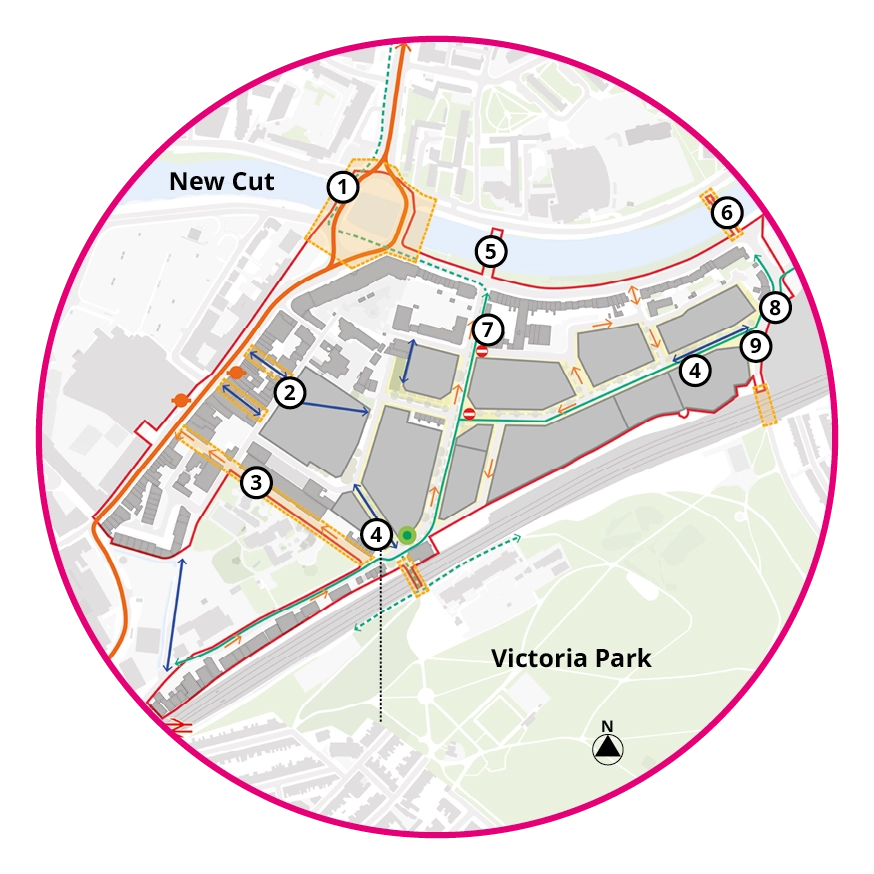Key objectives
Sustainable transport
- Prioritise and enable active travel modes such as cycling and walking.
- Improve connections to public transport routes and strategic cycle routes.
- Enable transition to electric vehicles, improve access to mobility on demand and reduce dependence on private motor vehicles.
- Contribute to reducing carbon emissions and improving air quality by enabling travel by sustainable modes.
Connections
- Improve east-west connectivity between St Luke’s Road and Bedminster Parade.
- Improve north-south connectivity between south Bristol and the city centre.
- Provide new pedestrian connections from key corridors to local amenities.
Placemaking
- Integrate green infrastructure and public realm improvements into streets.
- Create streets that are safe and inclusive for all.
The regeneration of the Whitehouse Street area will enable a transition to active and sustainable transport modes.
To prioritise active travel, the proposals include the creation of new north-south and east-west active travel corridors and the reduction of through motor vehicle traffic.
A new east-west active travel corridor can connect Bedminster to Temple Meads via the Mead Street Regeneration Area. The existing north-south will be joined to the proposed Whitehouse Lane cycle track which is being delivered as part of Bedminster Green regeneration.
There is potential to improve Philip Street as this is an important pedestrian and cycle route in the area, while improving the setting of Windmill Hill City Farm.
We will consider other potential transport improvements in the wider area, including improving Langton Street Bridge and Bedminster Bridge for sustainable transport modes.
Read Whitehouse Street Regeneration Framework.
